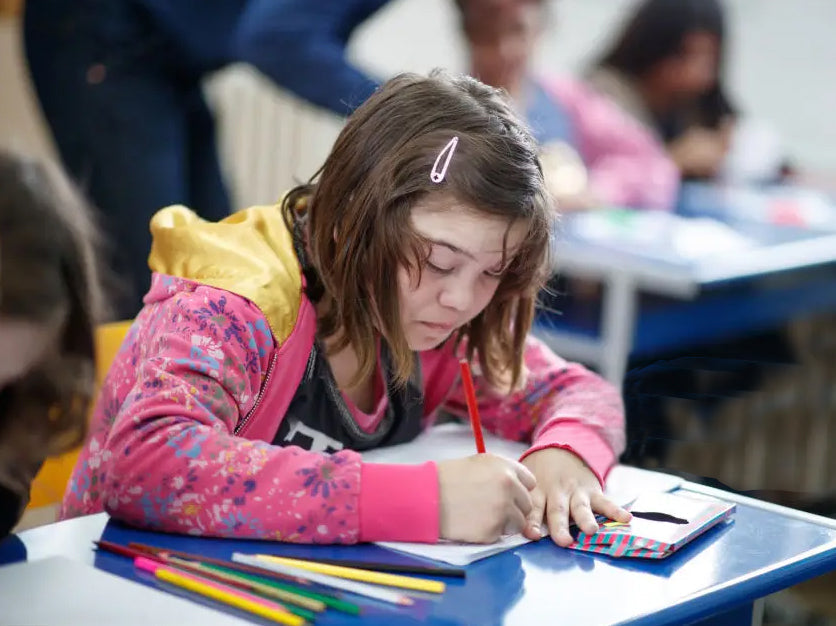
Coloring Benefits for Children with Autism
Share
Coloring is more than just a creative activity—it’s also a valuable therapeutic tool for children on the autism spectrum. For many kids, coloring offers a sense of calm, builds important developmental skills, and provides a fun way to learn. Parents, teachers, and therapists often include coloring activities for autism as part of daily routines because they support communication, self-regulation, and independence.
1. Encourages Calm and Reduces Anxiety
One of the biggest benefits of coloring for autistic children is its soothing effect. The repetitive motion of coloring, combined with the structure of a page, can help reduce stress and anxiety. This calming activity makes it easier for children to self-regulate and focus, especially when transitioning between tasks.
2. Strengthens Fine Motor Skills
Holding crayons, markers, or colored pencils improves grip strength and hand coordination. These fine motor skills are essential for writing, using scissors, and completing everyday tasks. Coloring provides a low-pressure, enjoyable way for children with autism to practice these skills.
3. Provides a Non-Verbal Outlet for Self-Expression
Some children on the spectrum may find verbal communication challenging. Coloring offers a safe and creative outlet for self-expression. By choosing colors and designs, children can communicate their preferences, feelings, and ideas—without needing words.
4. Improves Focus, Visual Processing, and Attention to Detail
Coloring activities encourage children to notice shapes, patterns, and spaces, which strengthens visual processing skills. These skills support problem-solving, reading readiness, and the ability to follow step-by-step instructions—all critical for learning and growth.
5. Builds Independence and Confidence
Finishing a coloring page gives children a sense of accomplishment and pride. Displaying their artwork helps build self-esteem and encourages independence, motivating them to try more activities and explore new challenges.
6. Creates Opportunities for Social Connection
Coloring can be done alone or with others, making it a flexible activity for both independent play and social learning. When children color alongside parents, siblings, teachers, or peers, it creates a structured way to bond, share ideas, and practice communication skills.
7. Adaptable to Each Child’s Needs
Every child on the spectrum is unique, and coloring can be easily adapted to fit their interests and developmental levels. Options include bold-outlined images for beginners, detailed designs for advanced skills, or themed coloring books that match their passions—like animals, world travel, or favorite characters.
Final Thoughts: Coloring as a Supportive Autism Activity
Coloring is more than just fun—it’s an accessible, low-cost, and powerful activity that supports learning, self-expression, and emotional well-being for children with autism. By incorporating coloring books for autism into daily routines, families and educators can nurture skills, boost confidence, and provide a calming outlet that children enjoy.
If you’re looking for creative, educational options, try one of our themed coloring books that explore world culture, geography, or history. They combine learning with fun and open the door to new adventures—one page at a time.
